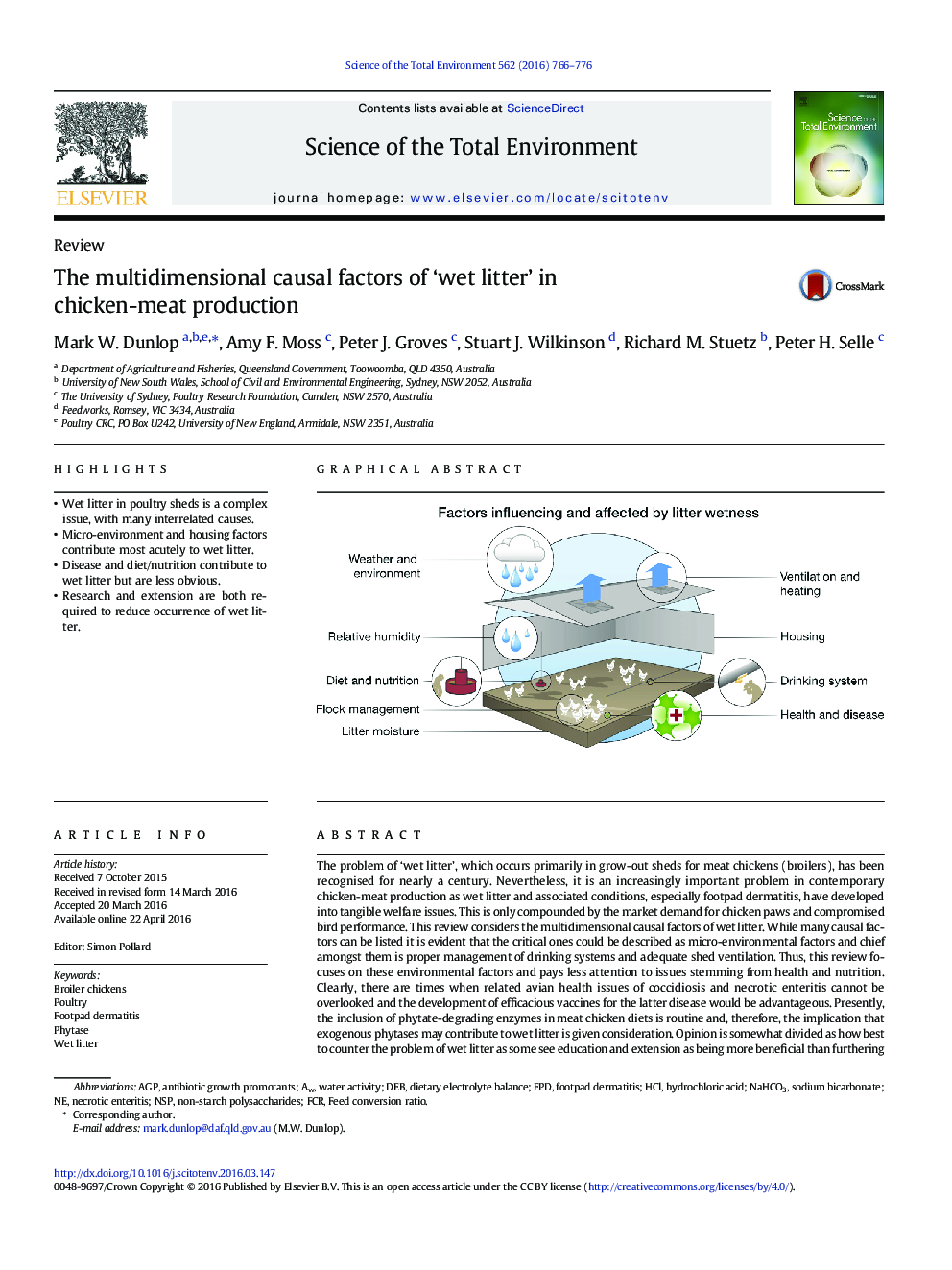| کد مقاله | کد نشریه | سال انتشار | مقاله انگلیسی | نسخه تمام متن |
|---|---|---|---|---|
| 6321836 | 1619726 | 2016 | 11 صفحه PDF | دانلود رایگان |
- Wet litter in poultry sheds is a complex issue, with many interrelated causes.
- Micro-environment and housing factors contribute most acutely to wet litter.
- Disease and diet/nutrition contribute to wet litter but are less obvious.
- Research and extension are both required to reduce occurrence of wet litter.
The problem of 'wet litter', which occurs primarily in grow-out sheds for meat chickens (broilers), has been recognised for nearly a century. Nevertheless, it is an increasingly important problem in contemporary chicken-meat production as wet litter and associated conditions, especially footpad dermatitis, have developed into tangible welfare issues. This is only compounded by the market demand for chicken paws and compromised bird performance. This review considers the multidimensional causal factors of wet litter. While many causal factors can be listed it is evident that the critical ones could be described as micro-environmental factors and chief amongst them is proper management of drinking systems and adequate shed ventilation. Thus, this review focuses on these environmental factors and pays less attention to issues stemming from health and nutrition. Clearly, there are times when related avian health issues of coccidiosis and necrotic enteritis cannot be overlooked and the development of efficacious vaccines for the latter disease would be advantageous. Presently, the inclusion of phytate-degrading enzymes in meat chicken diets is routine and, therefore, the implication that exogenous phytases may contribute to wet litter is given consideration. Opinion is somewhat divided as how best to counter the problem of wet litter as some see education and extension as being more beneficial than furthering research efforts. However, it may prove instructive to assess the practice of whole grain feeding in relation to litter quality and the incidence of footpad dermatitis. Additional research could investigate the relationships between dietary concentrations of key minerals and the application of exogenous enzymes with litter quality.
275
Journal: Science of The Total Environment - Volume 562, 15 August 2016, Pages 766-776
